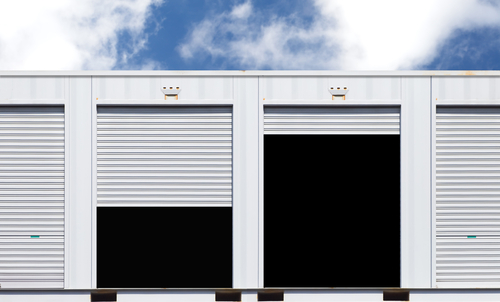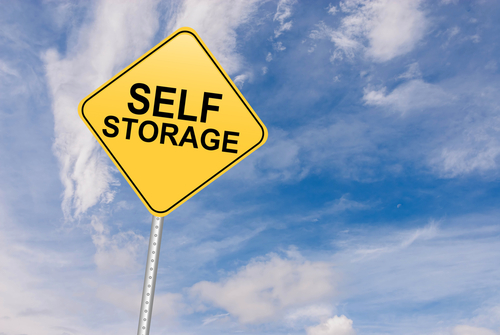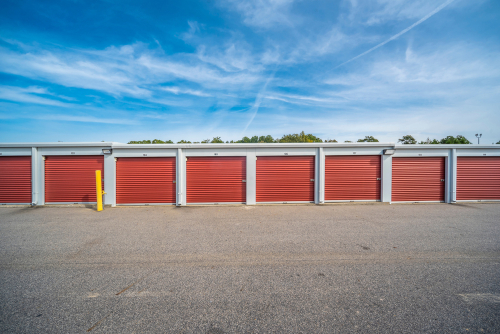Do you want to expand your rental business and invest in different types of properties? Perhaps you’ve considered investing in self-storage. Self-storage is an investment type that’s grown exponentially over the past few years. There are several reasons people utilize self-storage units, whether moving, downsizing, or not having enough space for all of their belongings. Keep reading if you want to learn more about self-storage and how to invest.

What is a Self-Storage Investment?
Self-storage units are pretty self-explanatory–they’re large commercial buildings with small garage-like sections, which people can rent out and store their belongings. That said, self-storage units can be used by individuals or businesses that don’t have the space for all of their supplies or inventory.

Most people have experience with self-storage units, as nearly 40% of Americans use a storage facility each year. After all, most people want to de-clutter and clear out their spaces without completely getting rid of all their stuff. So, instead of getting rid of it, they’ll store it away until they need it again, move, or decide they don’t need it.
There’s actually a significant demand for self-storage units, which is one of the reasons why it’s such a popular investment type right now. Read along as we discuss why your rental portfolio should include self-storage investments.
Why Is Investing in Self-Storage Popular Right Now?
Over the past year or so, investing in self-storage units has been extremely popular among real estate investors across the US. In 2021, we saw a massive increase in demand for self-storage. After all, many people started moving, downsizing, and changing the way they live at home.
The real estate market really changed due to the pandemic, which had many people buying homes, moving to more suburban locations, and needing a place to store their belongings. Although the concept of self-storage is not new at all, people started having a new appreciation for storing their items away while figuring out how to move during the pandemic.
That said, now that the demand for self-storage is high, investors are more interested in looking into this investment type. But how can investors break into the self-storage sector without any prior experience? Let’s go over how to get started with your first self-storage investment.
How Can Investors Break Into the Self-Storage Sector?
Are you interested in investing in self-storage but don’t want to break away from your typical investment types? You’re not alone. However, there are a few tips for investors that want to start exploring different investment types. Here are a few different ways you can invest in self-storage facilities.
- Self-Storage REITs
- Buying a Self-Storage Building
- Building a Self-Storage Unit
Self-Storage REITs
If you want to invest passively, you may consider investing in a Real Estate Investment Trust (REIT). A REIT is a company that invests its real estate assets, earns most of its income from real estate, and distributes dividends to shareholders.
If you go this route, you won’t have to buy an entire storage facility. Instead, you can choose an established self-storage REIT that is bound to make profits. Then, you make money through dividends or capital gains. However, keep in mind that self-storage REITs are publicly traded investments that can be affected by outside factors.

Buying a Self-Storage Building
Another common way to invest in self-storage is by buying a commercial building. Then, you have full control over the property, you earn the profits, and you’re in charge of the investment. As such, this route requires a lot more responsibility.
While looking at self-storage units to buy, you’ll have to do research. You’ll want to find buildings in good condition with high-occupancy rates and lots of square footage. Additionally, it’s important to calculate the cap rate, NOI, and any expenses you’ll need to take on. For instance, you’ll need to market the building to prospective renters, pay taxes, and look into property management companies in Northern Virginia to help manage your building.
Building a Self-Storage Unit
Finally, if you want to go the most expensive and labor-intensive route, you can build your own self-storage unit. However, it’s important to note that this investment takes more experience, time, and effort than buying a commercial building or investing in a REIT. On the other hand, most new storage facilities are Class A properties, meaning you can charge higher rates and earn higher profits.
First, you’ll have to find and buy land, then start constructing your build. You’ll have to first confirm that the land is suitable, then go through permitting, zoning, and other developing matters. Investing in an area with high demand and low vacancy rates for current storage units is important. Overall, if you want to go all-in on your storage investment, you can consider building it yourself.
Pros and Cons of Investing in Self-Storage
There are plenty of pros and cons of investing in self-storage units, especially depending on how you plan to invest. After all, different investment methods come with different risks and rewards. Nonetheless, here are some of the main advantages and disadvantages of self-storage investments.
Advantages of Investing in Self-Storage
- Can Be Highly Profitable- There are several reasons why self-storage can be profitable. For instance, there’s high demand, lower start-up costs, and it’s easier to raise rents on a monthly basis.
- Generally Low Maintenance- Since storage units are pretty basic buildings, there’s little maintenance. The majority of maintenance includes landscaping and taking care of common areas.
- Recession Resilient– Storage facilities have proven to be pretty resilient, even during recessionary periods. Whether people are moving into larger homes or downsizing, there’s always a need for storage units.
Disadvantages of Investing in Self-Storage
- Construction Roadblocks– If you’re looking to build a self-storage unit, there’s the chance of supply chain issues or zoning setbacks.
- Chance of Oversupply– If too many investors buy storage units in one area, it can oversaturate the market, decreasing occupancy rates.
- Short-term Leases– Most people rent storage units on a month-to-month basis. As such, there’s higher turnover with shorter leases, which means you often have to find new renters.
What to Look for While Investing in Self-Storage
If you’re looking for your first or next self-storage investment, there are a few factors to consider. After all, you don’t want to dive right into an investment without knowing a little more about the property, the local demand, and any competition you may have. As such, here are a few aspects for investors to look at before investing in self-storage.

- Occupancy Rates
- Price Per Square Foot
- Location
Occupancy Rates
First, look at the occupancy rates for other storage facilities in the area. If they’re around 90 to 100 percent occupied, you can safely assume that there’s a lot of demand. However, on the other hand, if occupancy rates are lower, there may not be a need for storage in that area. So, if you’re investing in an entire storage facility, ensure the occupancy rates are high.
Price Per Square Foot
To look at the competition in your area, look at the price per square foot. If all facilities have a high price per square foot, there’s likely a lot of demand.
Additionally, it’s important to look at the square feet per capita. How many square feet of storage space is there per person on average already? Look at this number before investing. If the number is higher, it could mean less demand in that area.
Location
Location is a huge factor to consider before investing in any property–especially self-storage units. Most people who utilize self-storage units live in smaller homes and apartments, so looking near these areas can make for a good investment. But, overall, it’s essential to know the demand in your desired location before making any investment decisions.
How to Manage Your Self-Storage Investment
Managing your real estate can be challenging for one person, especially if you have several different types of properties. For instance, going from your single-family home rental property to your self-storage investment to handle maintenance, tenant communications, and more can be challenging. Luckily, you don’t have to!
Bay Property Management Group offers comprehensive rental management services to busy investors, no matter how many properties you own. We can handle all the day-to-day operations, whether it’s tenant screening, maintenance, rent collection, etc. Contact BMG today if you need rental management services in Baltimore, Philadelphia, Northern Virginia, and Washington, DC.
